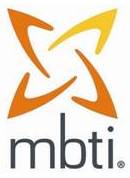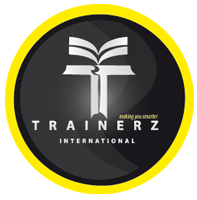Human Resources Solutions
MBTI Assessments & Development Sessions
Myers-Briggs Type Indicator (MBTI®)
 The Myers-Briggs Type Indicator (MBTI®) is a widely used assessment which provides insight into one's personality, motivations, natural strengths, and potential areas of growth. Using a relatively short, non-invasive forced-choice questionnaire, the tool helps individuals gain a conscious understanding of their thinking and communication preferences vis-a-vis other people.
The Myers-Briggs Type Indicator (MBTI®) is a widely used assessment which provides insight into one's personality, motivations, natural strengths, and potential areas of growth. Using a relatively short, non-invasive forced-choice questionnaire, the tool helps individuals gain a conscious understanding of their thinking and communication preferences vis-a-vis other people.
The MBTI® offers individuals a unique 360-degree view of their personality types by exploring their natural choices regarding energy orientation, the ways in which they take in and process information, as well as how they relate to the outer world
Applications: The MBTI® personality inventory has a wide range of applications to enable growth and development within organisations. These include team building, career exploration, conflict management, retention, and leadership and coaching.
Target Users: Directors, Senior Managers, Experienced Managers, Supervisors, Professionals, Entry-level
Versions: Online, Paper-based
Administration time: 30 minutes
MBTI® Evolution & Model
The Myers-Briggs Type Indicator® (MBTI®) assessment is the best-known and most trusted personality assessment tool available today. As many as 2 million assessments are administered annually to individuals, including to employees of most Fortune 500 companies.
The Myers-Briggs® assessment has its roots in Carl Jung's theory of psychological type. Katharine Briggs and her daughter, Isabel Briggs Myers, developed Jung's theory and the first forms of the instrument, sharing a vision to enable individuals to grow through an understanding and appreciation of individual differences in healthy personality.
In developing their assessment, Briggs and Myers sought to sort personality preferences using the three dichotomies explicitly described in Jung's writing, along with a fourth dichotomy made explicit by Briggs and Myers. These four dichotomies are:
Extraversion (E) and Introversion (I): Differentiating people who direct their energy primarily outward toward other people and events, from people who direct their energy primarily inward toward their inner environment, thoughts, and experiences.
Sensing (S) and Intuition (N): Differentiating people who take in information primarily through the five senses and immediate experience, from people who take in information primarily through abstract impressions and are more interested in future possibilities.
Thinking (T) and Feeling (F): Differentiating people who make decisions primarily based on logic and objectivity, from people who make decisions primarily based on personal values and the effects their decisions will have on others.
Judging (J) and Perceiving (P): Differentiating people who prefer structure, plans, and achieving closure quickly, from those who prefer flexibility, spontaneity, and keeping their options open.
MBTI® Uses
The MBTI® is a powerfully versatile solution that can be effectively utilized in a wide range of milieus including:
Career coaching: Understanding which work skills/environments complement different personality types can help individuals make better-informed choices regarding which career paths may make the best use of their preferences.
Conflict management: The MBTI® highlights areas for potential stress given specific personality types, and can be used to maximize efficiency by working around these challenge areas.
Leadership training: Differing leadership preferences can be studied and understood in the context of personality types. Doing this also highlight where leaders' teams may be missing out or facing challenges due to his/her leadership style.
Relationship building: By making individuals aware of the natural differences between them, the MBTI® helps them appreciate what the other person can bring to the table, and how best to relate so that their mutual strengths are tapped into.
Self awareness: The MBTI® works as an awareness tool, emphasizing individuals' natural strengths, which may or may not be expressed externally, while also calling out potential areas for development which don't come to them naturally.
MBTI® Reports
The MBTI® instrument generates a wide range of online and paper reports that can be customized per your need and budget. For your understanding, a complete list of reports and their uses are provided below.
Step I™ (Form M) online test version only and not for self scorable.
Profile Report: Designed to help you understand your results on the MBTI®
Team Report: Describes a group's type and its related problem-solving and conflict management styles.
MBTI® Interpretive Report: Offers a concise yet detailed interpretation of a client's results.
MBTI® Interpretive Report for Organizations: Explores leadership and communication styles based on MBTI® results.
MBTI® Work Styles Report: Pairs two people's MBTI® results to enhance their working relationship.
MBTI® Career Report: Explores career interests based on type.
MBTI® Complete: Provides the assessment and an interactive interpretation session in one online package.
Step II™ (Form Q)
MBTI® Step II™ Interpretive Report: Uses clear graphics to explore the variation within a client's personality type.
MBTI® Profile Report: gives you information about your personality type based on your answers to the MBTI® Form
MBTI® Reliability and Validity
The MBTI® assessment has been revised several times since it first appeared in 1942. New item formats and scoring methods were developed and tested first by Isabel Myers and later by professional psychometricians, with each revision leading to technical improvements over the previous form.
The most recent forms are Form M and Form Q, both of which use item response theory (IRT)-based scoring and item selection. Based on results from a broad, nationally representative sample each of the four preference scales on Form M has internal consistency reliability of .90 or greater and Form Q has a consistency of .77 across 20 facets.
Additionally, the validity of both Forms M and Q has been examined through behavioral observations, exploratory and confirmatory factor analyses, correlations with related measures, and even brain scans. Read more about the research and its findings on the CPP site.
